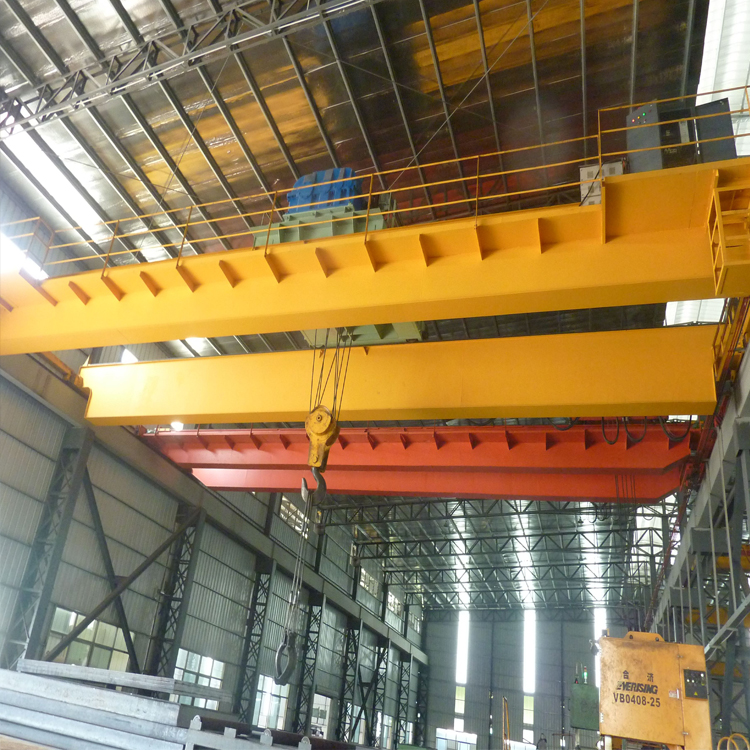The Basic Structure of a Bridge Crane
The structure of a bridge crane may appear complex, but each component has a specific function, working together to ensure stable operation.
Bridge: The bridge is like the “skeleton” of a bridge crane, spanning the height of a workshop or warehouse and providing solid support for the entire structure. It typically consists of a main beam and end beams, capable of bearing the weight of both the load and the crane itself.
Trolley: Mounted at each end of the bridge, it acts like the crane’s “legs,” driving the bridge longitudinally along tracks installed above the building, thereby expanding the crane’s operating range.
Trolley: The trolley moves laterally on the bridge’s tracks and is a key component connecting the bridge and the hoisting mechanism.
Hoisting mechanism: Mounted on the trolley, it is the core component responsible for lifting and lowering cargo. It utilizes a combination of components, including a motor, wire rope, and hook, to lift and lower loads.
Operating Principle of a Bridge Crane
The operating principle of a bridge crane is relatively simple. Simply put, it involves the coordinated operation of various components to transport heavy loads. When cargo needs to be moved, the motor in the hoist mechanism first drives the wire rope, lowering the hook and hooking the cargo. The motor then reverses to lift the cargo. Next, the trolley moves horizontally on the bridge track, transporting the cargo to the desired horizontal position. The trolley mechanism then drives the bridge longitudinally along the track, delivering the cargo to the designated longitudinal position. Finally, the hoist mechanism operates again, smoothly lowering the cargo, completing the transport operation.
Applications of Bridge Cranes
Bridge cranes are widely used and play a vital role in numerous industries.
Manufacturing: In machinery manufacturing workshops, bridge cranes are used to transport large parts, molds, and other components, ensuring smooth operation of production lines.
Metallurgy: In steel mills and other metallurgical enterprises, they are capable of handling heavy materials such as billets and steel, meeting the high-intensity demands of metallurgical production.
Logistics: In large warehouses and logistics centers, bridge cranes can efficiently load, unload, and transport cargo, improving logistics turnover efficiency. Construction Industry: At some large construction sites, overhead cranes are also used to lift building materials.

Post time: Aug-15-2025







